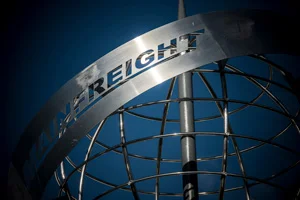Freight Basics - Glossary - Terminology
Freight terminology can be confusing many of the phares we used have developed in different parts of the world at different times - you may even find the same active or document has different names just depending on whether the freight moves by road or air!
We've put together a list of some of the most commonly confusing terms here to help you out.
Air and Ocean Terminology
Cross Docking
Buyer’s Consolidation
Bonded Warehouse
Carnet
Chargeable Weight
Freight charges are charged out on the chargeable weight of the shipment. This can either be the actual gross weight or the volumetric weight – whichever is greater. Working out the chargeable weight of a shipment is easy.
Airfreight – Take the cubic measurement of your shipment and multiply by 167
EG – Your shipment is 0.45cbm/25kgs, 0.45cbm X 167 = 75.15
The actual weight is 25kgs, the volumetric weight is 75.15kgs making the volumetric weight the chargeable weight
Sea Freight - Ratio is 1CBM = 1 tonne
Commercial Invoice
Consolidation
Demurrage
Import – The time between when the container is unloaded from the vessel to the pick up off the wharf.
Export – The time between when the loaded container is delivered to the port to the container being loaded on the vessel
The shipping lines give you a set amount of time for this to be done. Once this allotted time is up charges will apply per day thereafter
Detention
Import – The time between when the full container is taken from the port to the time is it returned empty
Export – The time between when the empty container is taken to the customer to its return to the port full
The shipping lines give you a set amount of time for this to be done. Once this allotted time is up charges will apply per day thereafter
Warehousing Terminology
Inventory Record Accuracy (IRA)
The measure of how closely official inventory records match the physical inventory.
Our team break each customer’s products into groups. Each group IRA is completed once a week to ensure that the team can identify discrepancies before stock take.
Warehouse Transfer
Customers may request certain product moved from our MEL warehouse to our BNE warehouse.
This shortens lead time for their product when ordered by their customer.
PIFOT (Picked In Full On Time)
Pick Faces
Domestic Terminology
Outturn
Endorsement

Where to from here?
-
Need advice on your specific shipment?
Your local Air & Ocean team are here to help.
Talk to our team of experts today! -
Want to learn more?
Go to our collection of articles to learn more about freight
Freight Basics Articles
